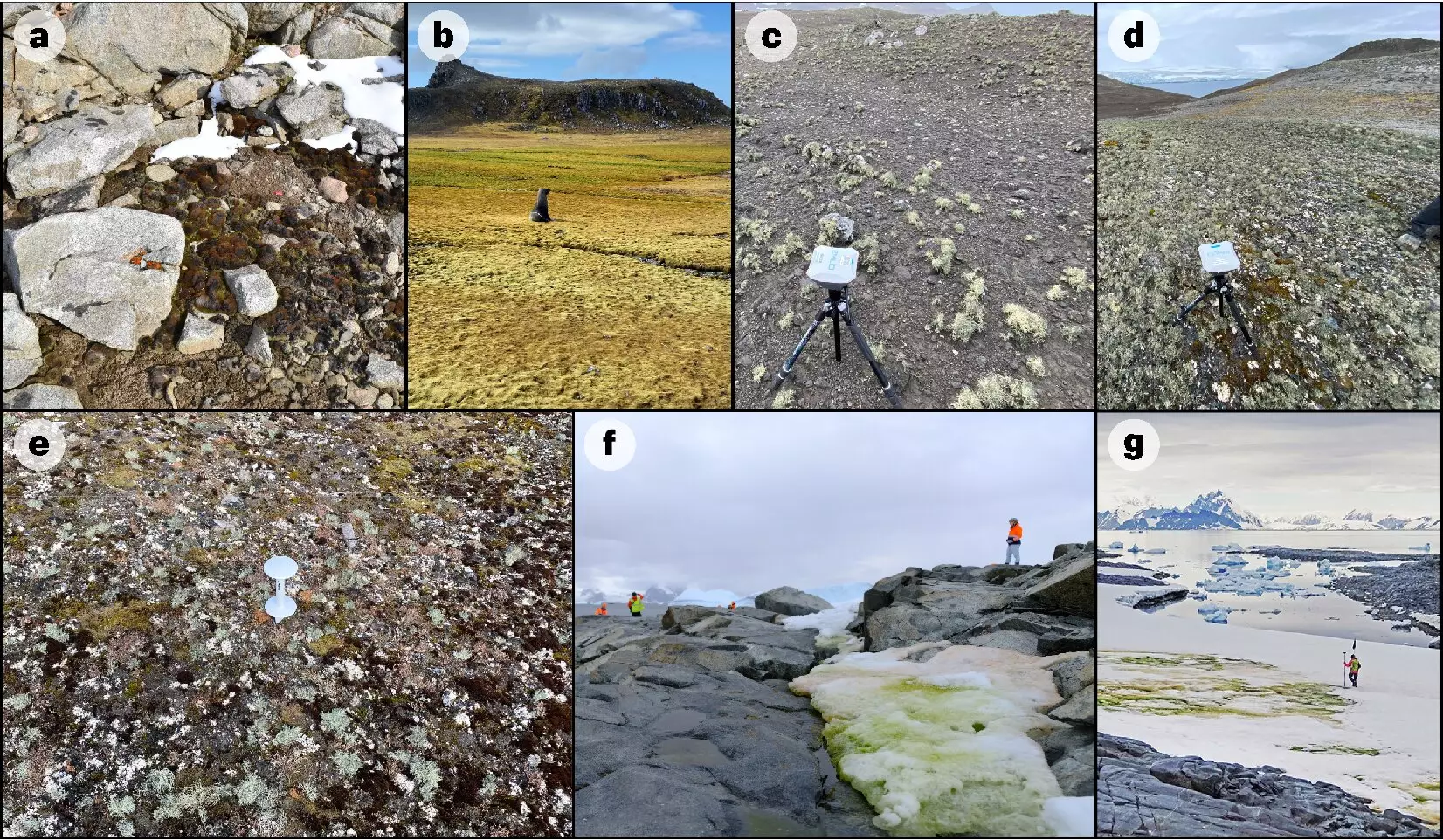The recent continent-wide mapping study conducted on Antarctica’s plant life has uncovered remarkable developments that might reshape conservation strategies in this frigid locale. Published in the distinguished journal *Nature Geoscience*, this research serves as a significant milestone in understanding plant growth patterns across the world’s southernmost continent. It aims not only to track the current state of vegetation in Antarctica but also to assess its response to the growing threat of climate change.
The scientific endeavor was spearheaded by an accomplished team from the University of Edinburgh, in partnership with several esteemed institutions including the Norwegian Institute for Nature Research and the British Antarctic Survey. Utilizing an advanced European Space Agency satellite, the researchers conducted extensive surveys of mosses, lichens, and algae, complemented by comprehensive field measurements gathered during several summer seasons. This methodological innovation has allowed for a groundbreaking discovery: nearly 45 square kilometers of vegetation have been identified across a continent largely characterized by ice. To contextualize this, the newly mapped area is about three times that of Lake Windermere, revealing hidden pockets of life in an otherwise barren landscape.
Intriguingly, more than 80% of the identified vegetation growth was concentrated within the Antarctic Peninsula and its surrounding islands. Such a concentration underlines the geographical specificity of Antarctic flora, but it also raises important questions about conservation practices in the region. Currently, the mapped vegetation constitutes a mere 0.12% of Antarctica’s total ice-free area, which highlights the need for updated conservation measures. Experts highlight that the existing Antarctic Specially Protected Area (ASPA) system doesn’t adequately cover these crucial regions, posing a risk to their longevity amidst ongoing environmental changes.
Additionally, it is essential to recognize the role that this resilient vegetation plays in the ecosystem. Dominated by hardy mosses and lichens, these organisms contribute significantly to local carbon and nutrient recycling. Their ability to withstand extreme conditions of temperature and moisture offers practical insights into possibilities for ecological resilience. Yet, despite their hardiness, their spatial limitations mean they are particularly sensitive to environmental changes, making it vital to closely monitor their presence and health.
As climate change accelerates, Antarctic vegetation is more than just a subject of study. It acts as a vital indicator of broader environmental shifts. Previous research has demonstrated that the sensitivities of these vegetative species make them reliable barometers for climate change within such a delicate ecosystem. By observing their responses in Antarctica, scientists can extrapolate potential outcomes for similar ecosystems across the globe, including fragile Arctic terrains.
According to Charlotte Walshaw, one of the leading researchers, this continent-wide mapping is not merely an academic exercise, but it significantly enhances our understanding of vegetation distribution in hard-to-reach areas. The insights gathered can lead to more impactful conservation initiatives tailored to the unique needs of Antarctic flora.
Dr. Claudia Colesie emphasizes the importance of identifying where these resilient organisms thrive. With targeted conservation measures, there is potential to safeguard these ecosystems against the impending threats posed by climate change. Meanwhile, Dr. Andrew Gray highlights the advantage of remote sensing as a method that minimizes human impact while providing a means to monitor changes in Antarctica’s fragile ecosystem effectively.
In essence, this extensive study not only maps previously uncharted territories of life but lays the groundwork for a more informed and proactive approach to conservation. As the world continues to grapple with climate change, Antarctica serves as a critical testing ground for understanding the resilience of life under extreme conditions. The insights gained from this research are vital not only for Antarctic conservation but for developing strategies to protect vulnerable ecosystems worldwide as well.

